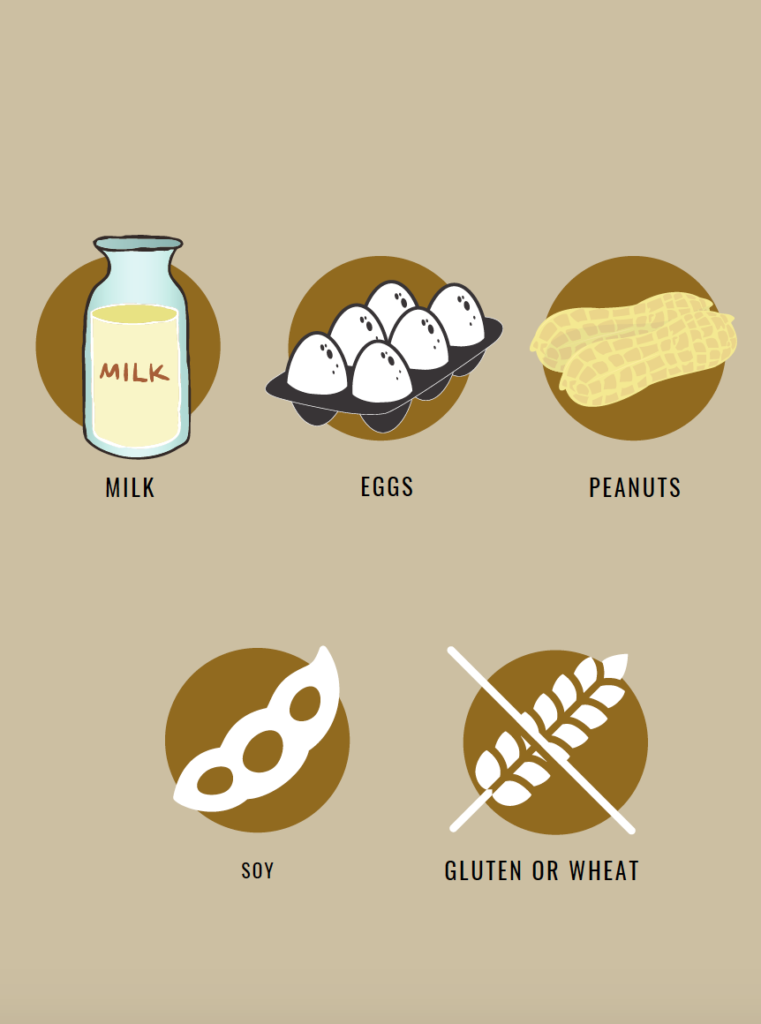Having a food intolerance is something we hear quite frequently, but what exactly does it mean? We spoke with Madeline Calfas founder of The Wellness Group and Gmccosmedical on how to identify food intolerance and what is its connection with the skin.
You also might like:
The Expert Talks: 7 Benefits of Juicing Celery
Is Coffee Actually Good? and How to Make the Best One at Home
How to Balance your Hormones and Mind with this Vegan-Friendly Supplement
To understand what food intolerance is, we first need to understand the basic concept of what happens when you eat something. Obviously we know that the food gets broken down by our teeth and saliva when we chew and then travels down to the stomach, where we have hydrochloric acid and enzymes that help to further breakdown food into useable compounds. Different enzymes are responsible for breaking down different compounds. Lactase helps to break down the lactose found in dairy, whereas protease is an enzyme that helps to breakdown protein.

Food intolerance is what’s called a reaction to certain foods. A food intolerance might be if you do not have enough of one of the enzymes required to breakdown a certain food. If the lactose enzyme is responsible for helping your body to breakdown lactose, then not having enough of this enzyme results in a lactose deficiency. Your body is then unable to break lactose down properly, and you can end up feeling gassy, bloated, and uncomfortable in the gut. You may get diarrhea, or it may begin to affect other areas of your body, such as your mouth (ulcers).
You may get headaches, or it can start to affect your skin – rashes, hives, little papule, and itchiness can all be symptoms of food intolerance. Food intolerance can also be a pharmacological reaction to a food, such as caffeine, or a toxic reaction to a compound in food.
A food intolerance is not an allergy. Food intolerances will not cause anaphylaxis like some allergies can, and will not be life threatening. A food intolerance doesn’t involve the immune system, they actually involve the digestive system.
Top 5 most common food intolerances
So how do you find out if you have an intolerance to any foods? You would probably have a bit of an inkling, to begin with. You might find that every time you have a milkshake, you spend the rest of the evening in the bathroom. Or if you have a glass of red wine, you might find that you consistently wake up with a headache the next day, even if you only had the one glass. Sometimes it may not be as obvious as that though.
Where do you go if it’s not as simple as “when I eat this, I feel…”?
One easy way to try and identify a potential food intolerance is to keep a food diary. It’s easy and affordable and is simply a matter of writing down everything you eat, followed by any symptoms you are feeling throughout the day. It may take a few weeks, but you eventually start to identify a pattern between foods you have eaten, and how you are feeling. However, food intolerances can sometimes take up to 72hrs to create a feeling of unwell, which can make it more difficult to work out what is causing your stomach to bloat.
In this instance, the best way to go is to do a food intolerance test. This is different from an allergy test that is done with a doctor because we are not looking for an immune IgE (allergic) reaction. A food tolerance test can be done through your naturopath, nutritionist, or integrative practitioner, and is usually a Dried Blood spot test that you can do at home.
How to recognize a food intolerance?
You can usually recognize an intolerance when you start to find a consistent reaction to foods – the symptoms mentioned above such as bloating, diarrhea, being gassy, feeling nauseous, skin irritations – these are all indications that certain foods may not be agreeing with you. But note that it needs to be a consistent reaction. Having a one-off episode of diarrhea that doesn’t happen again is not a sign of food intolerance. It is important that you do follow up with testing if you do suspect an intolerance, as sometimes these symptoms could be due to other reasons, such as gut dysbiosis.
How to live without a beloved food?
If you find that the worst-case scenario has happened, and you have been diagnosed with food intolerance to your favorite food, it may not necessarily be the end of the world or even your relationship with that food. Depending on your level of intolerance, it may be possible that you can still have that food, but just not every day. The bigger your reaction/intolerance to a food, the less frequently you can have it.
It may even end up being a ‘once in a blue moon’ situation, but isn’t that better than being a flat out ‘don’t even think about it’ deal? Interestingly enough, many people do note that once they have gone a certain period of time without that food (and you have given your body a chance to ‘detox’ from it effects on your body) when they do try to reintroduce it, it makes them feel pretty awful, and what was once your ‘can’t live without’ staple item is now about as appealing as dirty bed linen.
What is the connection between skin and food intolerance?
1. Chin inflammation and breakouts
Any kind of inflammation in the body is going to result in an elevation of the stress hormones. Stress is perceived by the brain, and when that happens, our bodies respond by releasing stress hormones such as corticotropin-releasing hormone (CRH), epinephrine (adrenalin), and glucocorticoids. Skin is an immediate stress perceiver and a target for stress response. The hypothalamic-pituitary-adrenal (HPA) axis is negatively affected, and stress can also inhibit ROS (Reactive Species Oxidation) production, which means more oxidative damage and an increase of inflammation to our skin. This increase in hormones that affects oxidative damage and inflammation pathways is how stress has a direct impact on our skin.
2. Jawline breakouts
Jawline breakouts usually tend to be considered a hormonal issue. Typically speaking, if someone comes in with breakouts over the jawline, it is signifying that there is a hormonal imbalance of some description happening. Having said that, as discussed previously, this is still a hormonal response. It’s just that it is an adrenal hormone response rather than a sex hormone response. The elevation of cortisol and DHEA is still occurring, and the HPA axis is still being negatively affected by the stress of inflammation.
3. Under-eye circles
Under-eye circles are often an indication of food intolerances. Known as allergy shiners (even though in this instance it’s not an allergy), maybe due to a histamine response. Even though histamine is usually associated with an allergy, it is also produced as a result of gut bacteria. If you have food sitting in your gut that can’t be digested as a result of enzyme inactivity, then your levels of histamine will increase, which can lead to the presence of these dark circles. The best way to get rid of these allergy shiners is to reduce the amount of histamine within your body.
4. Overall dryness and dullness
If your body isn’t happy, then it will literally reflect in your skin. Sebum production, collagen stimulation, and cellular turnover are all important things when it comes to the skin, but they are also easily influenced by inflammation, stress, and hormones. If you are dealing with a food intolerance response, then you will also be dealing with a stress response, which once again, is going to affect your skin. Your skin won’t be able to function normally whilst your body is dealing with a stress response. If your cellular turnover isn’t happening as it should, then this results in a buildup of dead skin cells.
The end result? Dull, lifeless skin that just won’t glow.
You also might like:
5 Tips To Break Up With Your Diet Plan Now
Healthy Sugar Free Ice Cream Brand for Your At-Home Cravings
A Top Nutritionist on How To Have A Flatter Stomach In 24 Hours









Ali
July 23, 2020 8:54 amThis is absolutely amazing, keep it going, looking forward to me.a advice as well in the future!!